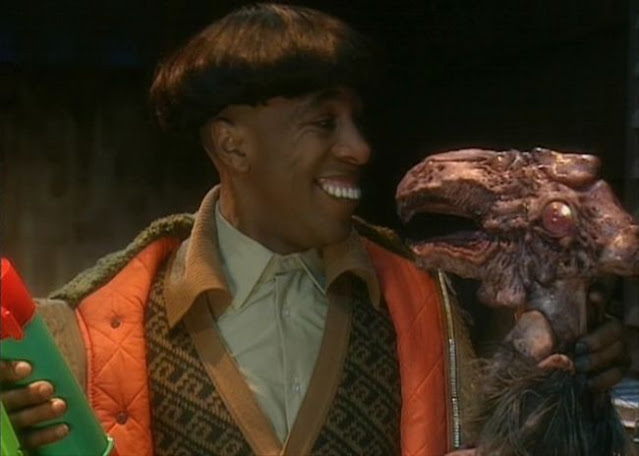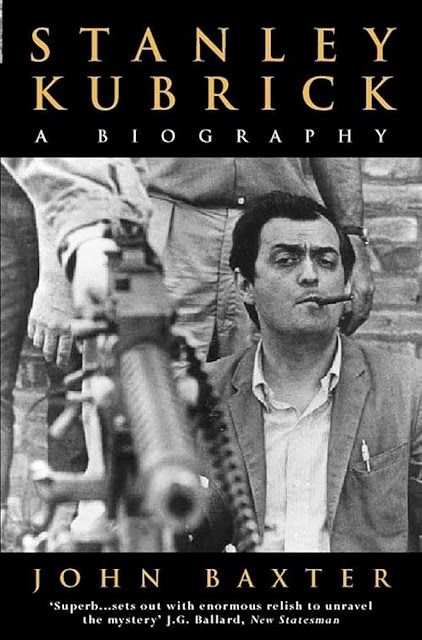The sixth season of sci-fi comedy Red Dwarf appeared in October 1993 as Red Dwarf VI. A new director was brought in for this series, Andy de Emmony, and this would be the last BBC series based around the established foursome of Rimmer (Chris Barrie), Lister (Craig Charles), Cat (Danny John-Jules) and Kryten (Robert Llewellyn), before a fifth character joined the ship's crew in series 7.
One character who is missing this time is the ship's computer Holly, formerly played by Norman Lovett (in the first two series) and then by Hattie Hayridge in the third, fourth and fifth seasons.
The only other significant change to the format for this season is that the crew awake from suspended animation to find that they have now lost Red Dwarf itself. The subsequent episodes are loosely linked by their faltering attempts to recover it.
This season sees the series continue on good form, although it does occasionally re-run ideas from earlier episodes and the scripts are more reliant on running jokes. These include Rimmer's mangling of supposed Space Corps directives and the Cat's tortured fashion similies.
 |
Saddle up: Cat (Danny John-Jules), Rimmer (Chris Barrie) and Lister (Craig Charles)
ride to the rescue in "Gunmen of the Apocalypse" |
The first episode, "Psirens", has the Red Dwarf crew navigating an asteroid field populated by giant shape-shifting insects. These insects trick their victims by assuming the shape of beautiful women, including Lister's lost love Kochanski and, even more alluringly, his old friend Pete Tranter's sister. But, once they have them in their clutches, the insects will suck their victims' brains out - something our heroes are keen to avoid.
In "Legion" the crew come across a space station where they meet a super-intelligent humanoid called Legion. So astounded are they by his capabilities that they decide to ask him to join them as part of the crew. This leads to chaotic scenes as they try to impress their host by attempting to use Mamosian anti-matter chopsticks and telekinetic wine during dinner. But they don't yet realise that Legion can never leave this space station - and now nor can they.
The Emmy award-winning episode "Gunmen of the Apocalypse" gives the crew the chance to play cowboys. After hostile simulants infect the ship with a computer virus, Kryten plugs himself into the computer to try to fight it.
 |
| Jenny Agutter as Kryten's creator Professor Mamet in "Psirens" |
The rest of the crew are able to see Kryten's dreams on a monitor, where his mind has turned the contest into a metaphorical fight between his washed-up sheriff and a gang of desperadoes in a western frontier town. When it looks like things are going badly for Kryten, the other three saddle up and join in, with the help of a virtual reality western game.
A western parody is an opportunity too good to miss and "Gunmen of the Apocalypse" doesn't disappoint. This episode was partly shot at
Laredo, a recreation of a Wild West town in Kent that has been much used in film and TV.
"Emohawk - Polymorph II" sees the crew trading with a primitive tribe of "GELFs" (Genetically Engineered Life Forms) for equipment they need for their ship. The price of the trade is that Lister must marry the chief's hideous but amorous daughter. He is persuaded to go through with the ceremony on the basis that he will then escape when the others are safely back on board the ship.
 |
| Danny John-Jules as Duayne Dibbley in "Emohawk - Polymorph II" |
But when Lister inevitably flees on his wedding night, the chief sends his pet polymorph after him in revenge. This does the usual polymorph thing of disguising itself as everyday objects, before revealing its true form and extracting various emotions from our unsuspecting heroes. In the case of Rimmer and the Cat, this results in them turning into a couple of familiar characters.
This episode re-hashes ideas from earlier ones - most obviously "Polymorph" from
Red Dwarf III - and brings back both Ace Rimmer and Duayne Dibbley in a shameless piece of fan service. But, in its defence, it is pretty funny.
In "Rimmerworld", Rimmer finds himself the lone human stranded on a barren planet for hundreds of years. All he has are a terraforming device and a DIY cloning kit. Seeking to end his loneliness, he decides to clone himself - resulting in a planet full of Rimmers.
 |
| Cat and Rimmer's future selves in "Out of Time" |
Red Dwarf VI ends with "Out of Time", where the Dwarfers meet their future selves. To their dismay, they learn that they have become sybaritic time travellers, enjoying the very best the past has to offer, even if that means lunch with the Hitlers - although they have their excuses ready:
"A charming couple".
"We never talk about his work."
"They're fine, as long as you don't get onto politics".
The two Red Dwarf crews do battle, the current crew unwilling to provide the others with the technology they require to continue their travels, and their future counterparts unwilling to leave, or go on living, without it.
Red Dwarf VI would be the last season of Red Dwarf in this precise incarnation and, for many, the end of its "classic" era. After the rushed production schedule on this series to meet a BBC deadline for a Spring broadcast (that was later moved to Autumn anyway), Chris Barrie decided to call it a day - particularly as he now had his own popular sitcom, The Brittas Empire, on BBC1.
Meanwhile, co-writer and co-creator Rob Grant would also step down, leaving Doug Naylor to take charge of the
next series alone.
Red Dwarf wouldn't return for more than three years and, when it did, there would be some major changes.
See also:






Comments
Post a Comment